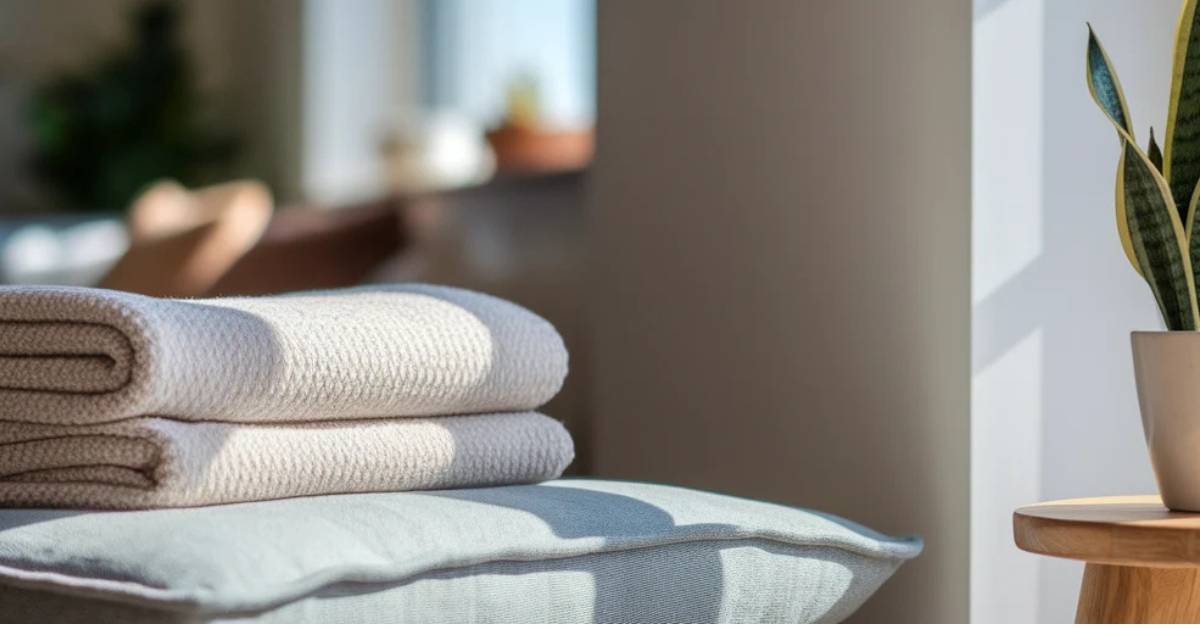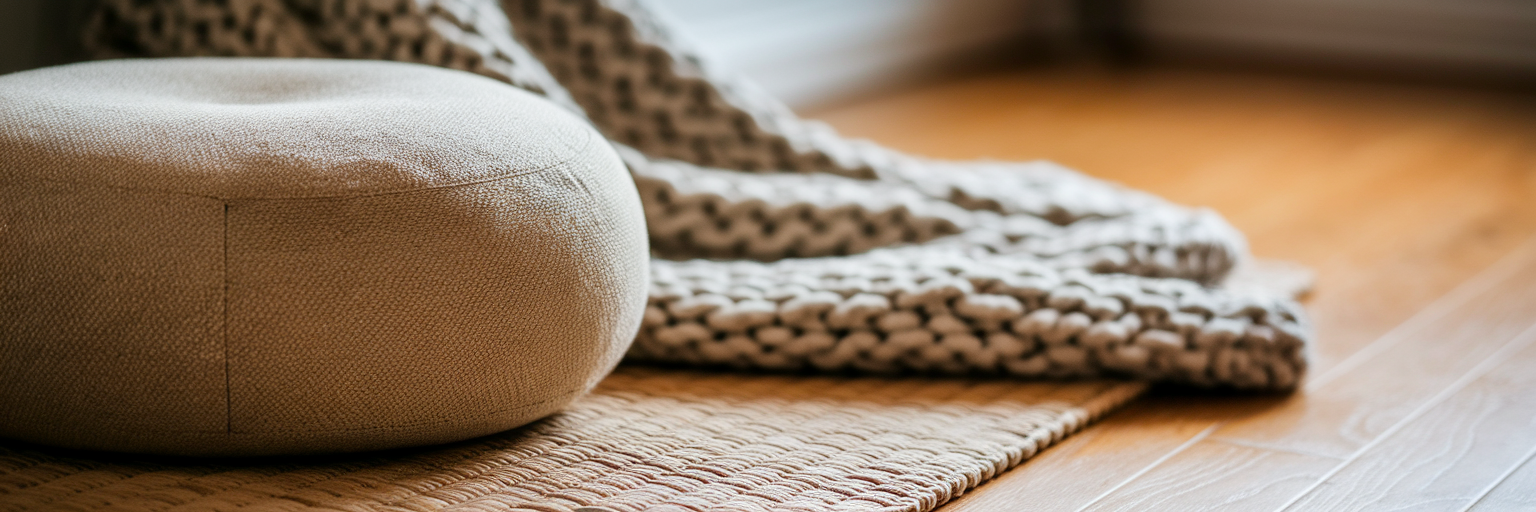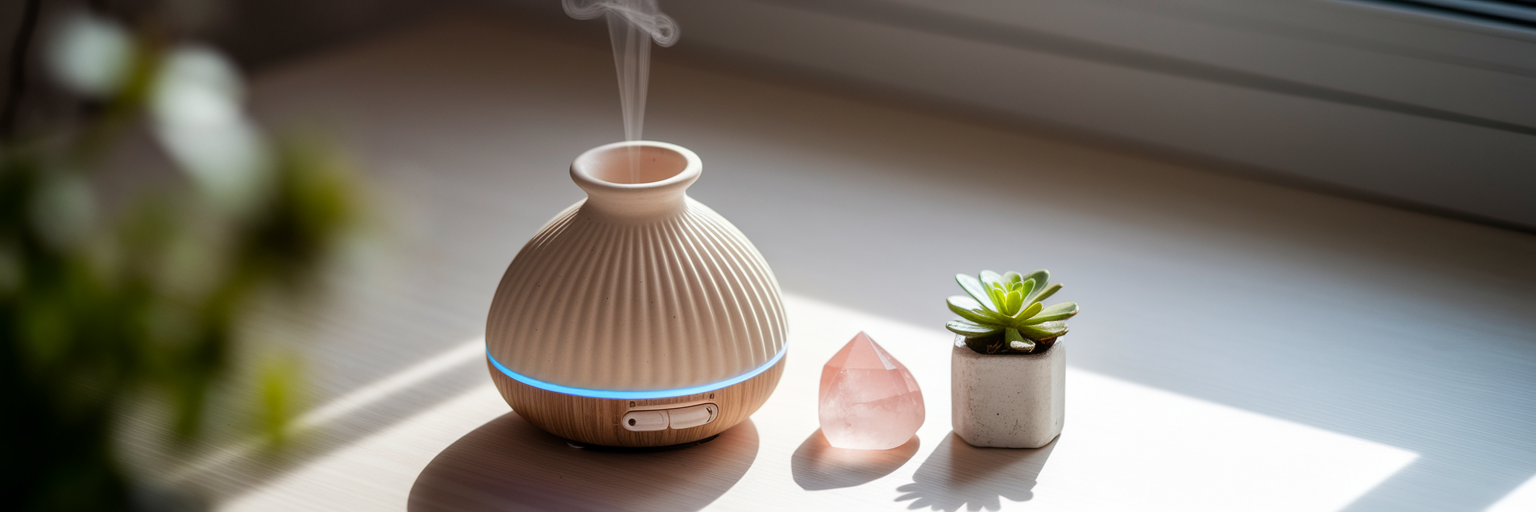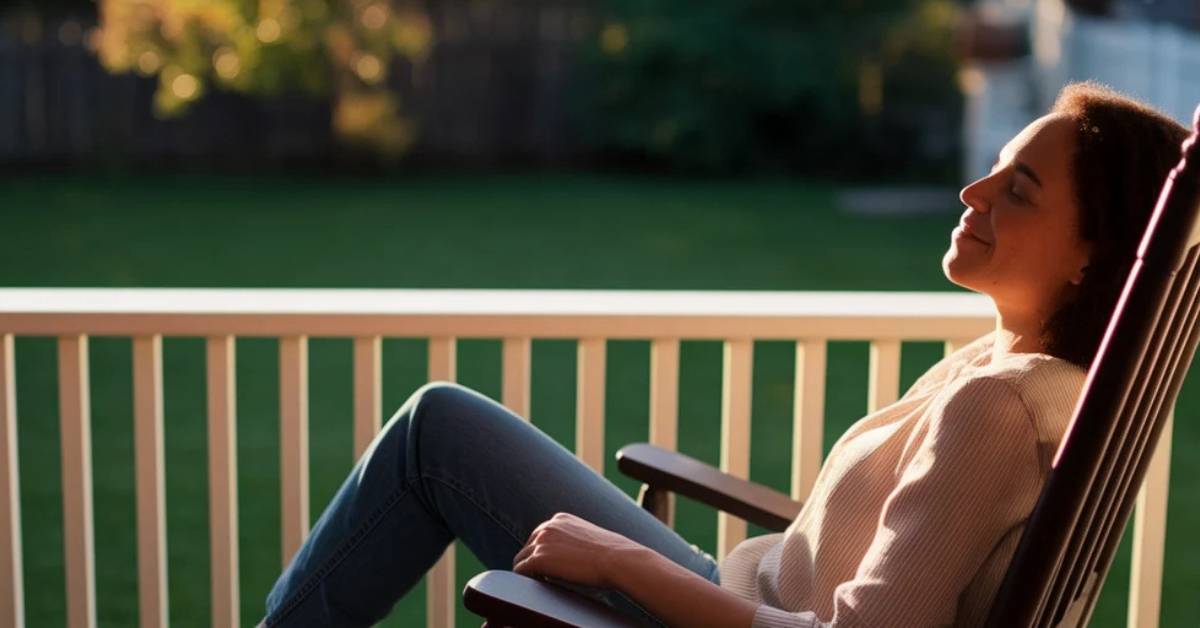Article: Designing a Meditation Space You Actually Love

Designing a Meditation Space You Actually Love
The average person has over 6,000 thoughts a day, according to a 2020 study from Queen's University. A dedicated space for stillness can feel like a gentle ‘mute’ button for that inner chatter.
Your Personal Pocket of Peace
Learning how to create a meditation space isn't about building a grand, expensive room. It’s about creating a small, intentional anchor that signals to your brain it's time to unwind. Think of it as a visual cue to exhale, a physical permission slip to just be. This simple act of carving out a corner for yourself is a profound expression of self-love, not another chore to add to your list.
You don't need to go full-on zen monastery. A comfy cushion and a plant you can remember to water are a fantastic start. The real magic comes from your intention. When you decide a space is for your peace, it begins to hold that energy for you. It becomes a place you look forward to returning to, a tiny pocket of calm in the beautiful chaos of life. Perfection is not the goal; presence is.
Finding the Right Spot in Your Home
The first step in designing a peaceful area is finding a spot that feels good to you. It doesn't need to be a whole room, just a corner that feels a little quieter and out of the way. Look for low-traffic areas where you're less likely to be interrupted by someone searching for their keys or the family pet demanding a snack.
Consider these often-overlooked spots:
- A quiet corner of your living room, tucked behind a favorite armchair.
- A cleared-out section of a closet, creating a cozy little "closet sanctuary."
- The space beside your bed for an easy morning or evening routine.
Natural light can be a wonderful mood-setter. An east-facing window can energize a morning practice with the sunrise, while a north-facing spot offers soft, consistent light all day. If natural light is scarce, don't worry. A lamp with a warm, soft bulb works beautifully. To handle distractions, a simple decorative screen can create a sense of privacy, or you can just let your family know you need a few quiet moments. The "right" spot is simply the one you feel drawn to. And remember, mindfulness can be woven into any part of your day. Even a simple practice like a shower meditation can build the habit, which you can explore in our guide on how to practice shower meditation step-by-step.
Building a Foundation of Comfort
Let’s be honest, it’s hard to find inner peace when your knee is cramping. If the body is fidgety, the mind will follow. Physical comfort is a non-negotiable element for a settled mind, as it allows your body to be supported and almost "forgotten" during your practice. This is about creating a soft place to land, literally.
Explore what feels best for your body:
- Traditional meditation cushions, like a zafu and zabuton, help elevate your hips for better spinal alignment.
- Meditation benches are a gift for sensitive knees, taking the pressure off your joints.
- A thick yoga mat layered with supportive blankets or bolsters offers a versatile and gentle foundation.
When it comes to posture, think "dignity and ease" rather than rigid perfection. Sit with a straight but not stiff spine, allowing your knees to fall comfortably below your hips. And please, don't feel pressured to force a perfect lotus position. The best posture is one you can hold without wincing. As you build this foundation of comfort, you might feel called to explore deeper practices, like those in our Chakra Meditation Course, which helps align your energy from a place of ease.
Engaging the Senses with Sight and Sound
With your comfortable spot chosen, it's time to create an atmosphere that soothes your senses. This is where you can play with light and sound to gently guide your mind toward stillness.
Creating Visual Calm
When it comes to calming decor for meditation, less is truly more. A cluttered space can lead to a cluttered mind, so aim for simplicity. A neutral color palette with warm, earthy tones can be incredibly grounding. For lighting, choose warm-toned bulbs (around 2700K) to create a soft, inviting glow. Flameless LED candles are a wonderful choice for adding that flickering ambiance without any worry. To add a touch of personal inspiration, consider a single piece of meaningful art. You can find beautiful ideas for serene prints, like those highlighted by About Wall Art, that translate perfectly to a meditation corner.
Setting the Mood with Sound
Sound can either be a distraction or a powerful tool for focus. Soft textiles like a small rug or a few plush cushions can help absorb jarring household noises. From there, you can introduce sounds that enhance your practice. This could be soft instrumental tracks, gentle nature sounds like rain or flowing water, or even a small tabletop fountain. A simple Bluetooth speaker is handy for playing guided practices, and you can explore a variety of soundscapes in our library of music meditations to find what resonates with you.
Deepening Calm with Scent and Air
Scent is powerfully linked to memory and emotion, making it a beautiful tool for creating a consistent ritual. The moment you smell a certain aroma, your brain can receive the signal that it’s time to slow down. This is where using essential oils for meditation can truly transform your space. An ultrasonic diffuser is a great way to gently disperse a calming fragrance.
Fresh air is another simple yet profound element. If you can, open a window for a few minutes before you begin to clear the energy of the room. Adding a few low-maintenance, air-purifying plants like a snake plant or pothos not only cleans the air but also brings a touch of living nature indoors. These supportive tools are here to enhance your practice, and you can explore more options in our collection of natural health products.
| Essential Oil | Primary Benefit | Simple Usage Suggestion |
|---|---|---|
| Lavender | Calming & Stress Relief | Diffuse 15 minutes before your practice. |
| Frankincense | Grounding & Spiritual Connection | Add a drop to your palms and inhale deeply. |
| Sandalwood | Focus & Mental Clarity | Use in a diffuser during your meditation session. |
| Bergamot | Uplifting & Mood-Boosting | Add to a room spray with water for a light mist. |
| Chamomile | Soothing & Restful | Diffuse in the evening for a pre-sleep meditation. |
This table offers a starting point for incorporating aromatherapy into your practice. The chosen oils are selected for their well-known properties that support mindfulness and relaxation.
Making the Space Uniquely Yours
This is the most delightful part: infusing your space with your own spirit. This is what transforms a simple spot into a true sanctuary and makes your at home meditation corner ideas come to life. There are no rules here, only what feels authentic and joyful to you. It’s not about what looks good on social media; it’s about what makes your heart feel at home.
Consider adding a few personal treasures:
- Crystals that resonate with you or simply catch your eye.
- A meaningful photo, a postcard from a loved one, or a piece of your own art.
- A mala bead necklace to hold during your practice.
- A journal and pen to capture any insights that arise.
Your meditation space is a living part of your practice, and it can evolve as you do. Surrounding yourself with items that bring you comfort and joy, whether it's a favorite mug or a cozy sweater from our wellness merchandise, is all part of the beautiful process of nurturing your inner world.



